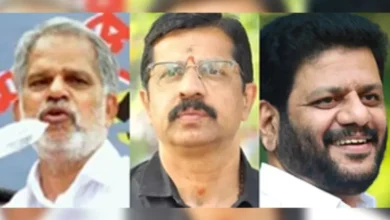
New Delhi: Truckers across India called off their two-day strike after Union Home Secretary Ajay Bhalla assured the All India Motor Transport Congress (AIMTC) that the implementation of the new penal provision related to hit-and-run cases would only occur after consulting with the transport body. The strike was initiated in response to provisions in the recently enacted Bharatiya Nyay Sanhita (BNS), which introduces stringent penalties for hit-and-run incidents.
Union Home Secretary Ajay Bhalla urged AIMTC and protesting drivers to resume work, emphasizing that the new laws are not yet in effect. The truck drivers and bus operators had raised concerns about the provisions in the BNS related to hit-and-run cases, prompting protests in several states.
Under the Bharatiya Nyay Sanhita, which replaces the colonial-era Indian Penal Code, drivers causing a serious road accident by negligent driving and fleeing the scene without informing the police or any official from the administration can face punishment of up to 10 years and a fine of Rs 7 lakh.
Many transporter and farmer organizations strongly criticized the new law, demanding its immediate repeal. The protests brought attention to the need for clearer communication and understanding of the implications of the BNS.
#ट्रक वालों ने पुलिस को दौङा दौङा कर पीटा
यह गुंडागर्दी है!!#truck #strike @dsrajpurohit291 pic.twitter.com/pzVQnPNAMV— Doonger Singh (@dsrajpurohit291) January 1, 2024
New Hit-and-Run Law: Key Provisions
The recently enacted Bharatiya Nyay Sanhita introduces stringent penalties for hit-and-run incidents in India. The law specifies that an accused individual causing a fatal crash and fleeing the scene without reporting to authorities could face imprisonment for up to 10 years along with a fine.
Two Categories under “Causing Death by Negligence”:
- Rash or Negligent Act Not Amounting to Culpable Homicide:
- Imprisonment for up to five years.
- Fine.
- Rash and Negligent Driving Not Amounting to Culpable Homicide:
- Up to 10 years of imprisonment.
- Fine.
Despite the law’s intentions, experts highlight the need for greater clarity on reporting procedures, considering the potential risk of public anger at accident scenes. Safeguards are also required to prevent potential misuse of this provision.
Earlier Hit-and-Run Law:
Previously, individuals accused in hit-and-run cases were tried under Section 304A of the Indian Penal Code, facing penalties of up to two years in jail upon identification. The introduction of the new Bharatiya Nyay Sanhita signifies a substantial shift toward more severe consequences for hit-and-run offenses in India.
As discussions and consultations continue, stakeholders are advocating for a balanced approach that prioritizes road safety while addressing concerns raised by various segments of society. The implementation of the new law will undoubtedly reshape how hit-and-run cases are prosecuted and serve as a benchmark for ensuring accountability on the nation’s roads.






